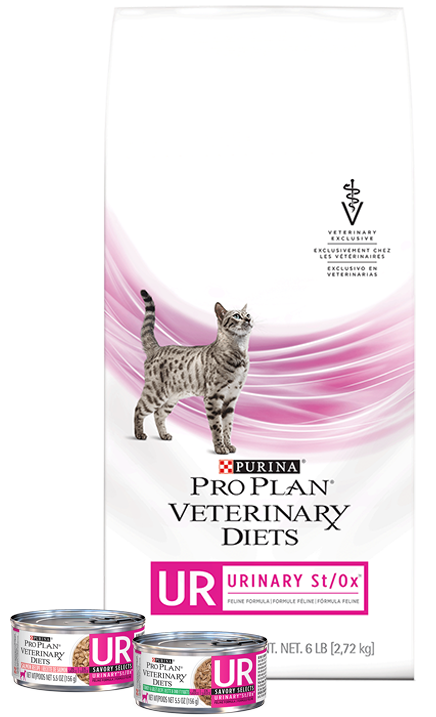This post is in cooperation with Purina. All thoughts and opinions are, as always, my own.

It wasn’t all that long ago that we almost lost one of our cats. She couldn’t go to the bathroom and whined and cried. She was straining at the litter box and we noticed blood in her urine. After a trip to the vet, we found out she had a urinary tract problem and would need special food her whole life. Not a problem! Anything for my kitty!
Now there is a new option for those that have cats with the same problems. Purina Pro Plan Veterinary Diets offers UR St/Ox Urinary Formula. It has a high level of protein and moderate calories so it is an all-around good food for your beloved feline. It produces urinary acidification to help reduce struvite crystal and stone formation, promotes increased water intake, and promotes increased urine volume. The best part for your cat is that they will love it! Cats get the benefits of the food with the taste they love.
There are some risk factors for FLUTD (or lower urinary tract disease).
FLUTD Risk Factors
Age, gender and physical activity can help indicate whether or not your cat is at a higher risk for developing FLUTD.
- Gender:Both male and female cats can experience urinary tract disorders, but since male cats have longer and narrower urethras, their urinary tracts are more likely to be obstructed by crystals and mucous.
- Breed:Urinary problems are more common in certain breeds, such as Persians, where there is a lower incidence in Siamese.
- Age: Young adult cats between the ages of 2 and 6 years are more likely to have lower urinarytract disorders, but cats of any age are susceptible.
- Activity Level:indoor cats seem to be more susceptible to lower urinary tract disorders. This may be because confinement reduces physical activities, which in turn may reduce the amount of water consumed and frequency of urination, allowing crystals to form in the urine.
- Diet:high levels of ash and magnesium in the diet were once through to cause crystals. However, more recent work indicates that urine pH and concentration are more important factors in the development of FLUTD. Increasing water intake is highly recommended to help reduce the risk of FLUTD.
How to Recognize the Symptoms
You will likely notice a change in your cat’s appearance or behavior if he or she is experiencing FLUTD. Look for common signs, such as:
- Makes frequent trips to the litter box
- Cries when urinating
- Urinates outside the litter box
- Licks genital area excessively
- Strains to urinate, with little success
- Displays signs of anxiety, such as pacing or hiding
If your feline friends is showing signs of lower urinary tract disease, or FLUTD, be sure to see a vet and try the Pro Plan Veterinary Diets UR Urinary St/Ox Feline Formulas.
Do you have cats with urinary problems?



Leave a Reply